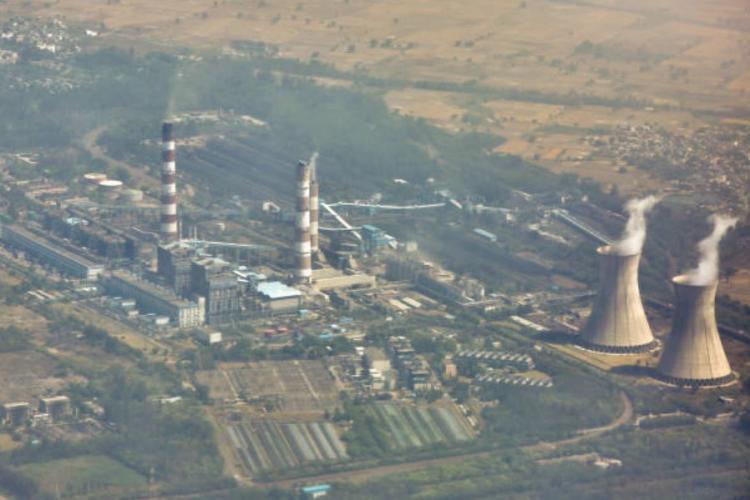
With India’s energy demand projected to triple by 2040, nuclear power is once again in the spotlight. Touted as a clean, reliable, and virtually limitless energy source, atomic power is being positioned as a key pillar in the country’s strategy to reduce coal dependence, tackle urban air pollution, and achieve net zero emissions by 2070. Yet, nuclear currently contributes only around 3% to India’s electricity generation. The government is now contemplating a bold reform: opening up the tightly controlled nuclear sector to private players.
This shift, if it materialises, would mark a seismic change in a domain long dominated by state-owned enterprises like Nuclear Power Corporation of India Ltd (NPCIL) and NTPC Ltd. The upcoming monsoon session of Parliament is likely to see two key legislative amendments aimed at paving the way for greater private participation and foreign investment in India’s civil nuclear sector.
READ | India-UK FTA to shake up whisky market with steep tariff cuts on Scotch
Amendments to unlock private investment
The first proposed change is to the Civil Liability for Nuclear Damage Act (CLNDA), 2010. This amendment seeks to cap the liability of equipment suppliers in the event of a nuclear incident. Specifically, it would limit monetary exposure to the value of the original contract and introduce a time-bound window for liability claims—measures that bring Indian norms closer to international standards. The second amendment will allow private Indian companies to own and operate nuclear power plants, a move that could significantly alter the structure of India’s nuclear energy market. In a marked departure from current policy, the government may also permit minority equity participation by foreign firms in upcoming nuclear projects.
The legislative bottlenecks—especially supplier liability clauses in the CLNDA—have been cited as the primary deterrents for foreign nuclear vendors such as GE-Hitachi, Westinghouse, and France’s Framatome. These provisions assign liability to equipment suppliers in the event of an accident, creating uncertainty and risk. By addressing these issues, India hopes to revive stalled mega-projects like Jaitapur (EDF, France) and Kovvada (Westinghouse, USA), while giving new momentum to its civil nuclear agreement with the United States—nearly two decades after it was signed.
The timing of the reforms is not incidental. New Delhi is keen to showcase this liberalisation as part of its wider trade and investment dialogue with Washington. With a bilateral trade agreement under negotiation, opening the nuclear sector could help seal a broader economic partnership with the U.S.
India has set an ambitious target of scaling up its nuclear capacity to 100 GW by 2047. Domestic conglomerates like Reliance Industries, Tata Group, and Adani are reportedly exploring investments worth up to Rs 43,000 crore ($5.14 billion) each, particularly in the emerging domain of small modular reactors (SMRs). These advanced nuclear technologies are being promoted as safer, faster to deploy, and more cost-effective—mirroring developments in markets like the UK and Canada, where companies like Rolls-Royce are leading SMR innovation.
Global comparisons and domestic concerns
Globally, 440 nuclear reactors supply around 10% of the world’s electricity. With countries like China aiming to increase nuclear capacity to 70 GW by 2035 and France sourcing half its electricity from atomic power, India’s nuclear push is both timely and necessary. But the transition must be managed carefully.
India’s supplier liability clause under Section 17 of the CLNDA is more stringent than international norms. In contrast, the Paris (1960) and Vienna (1963) Conventions, adhered to by countries such as France, the UK, and Japan, assign absolute but capped liability to operators and shield suppliers from direct claims—unless gross negligence is proven. The U.S. system, under the Price-Anderson Act (1957), pools operator liability up to $16 billion and similarly protects suppliers.
India’s planned amendments will bring it closer to the U.S. model. Yet, critics point to the stark difference in regulatory capacity. Unlike the robust oversight regimes in advanced economies, India’s Atomic Energy Regulatory Board (AERB) lacks full independence and is under-resourced, raising fears that liberalisation could dilute safety standards. Public memory of the Bhopal gas tragedy continues to fuel scepticism about the ability of private operators to prioritise safety over profits.
Big opportunities, bigger risks
If implemented, the reforms could unlock investments worth Rs 4–6 lakh crore ($50–70 billion) by 2035, accelerating flagship projects such as Kovvada and Chhaya-Mithi Virdi. Strategic alignment with partners like the U.S. and France would deepen, and the move could act as a catalyst for finalising an FTA with Washington.
However, the question of who pays when things go wrong remains unresolved. The current operator liability of Rs 1,500 crore ($185 million) under CLNDA, along with a Rs 2,300 crore ($285 million) government-funded insurance pool, appears woefully inadequate when compared to the estimated Rs 45,000 crore ($5.5 billion) cleanup cost of the Fukushima disaster. If liability is capped and private players cut corners, the financial burden may fall squarely on Indian taxpayers.
India’s proposed reforms mark a bold attempt to reshape its nuclear energy future. By aligning with global liability standards and courting private and foreign investors, the country aims to supercharge its clean energy ambitions. But the devil lies in the details. Without strengthening regulatory institutions and ensuring transparent risk management frameworks, the reform could invite new vulnerabilities.
As with all transformative changes, the proof will lie not in intentions, but in execution. For now, India’s nuclear gamble must be viewed with cautious optimism.
